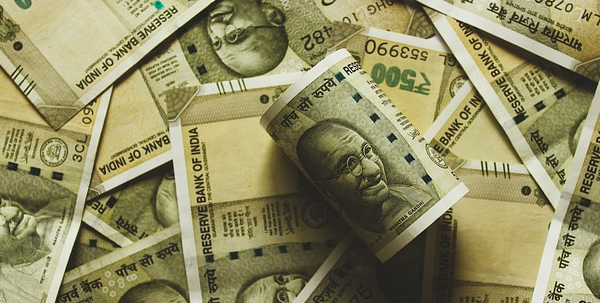
The Economics of Paying the COVID-19 Stimulus Package
30 April 2020
This two-part blog series explains the monetary options available with policymakers to provide stimulus at the time of a pandemic.
Even as the Finance Minister announced a stimulus package of Rs 1.7 lakh crore (over USD 2 billion) last month, the government has faced criticism for the paltry sum it has committed to dole out, an amount less than 1 per cent of the GDP. In comparison to countries such as Indonesia (about 450 million IDR or close to 3 per cent of their GDP) and Thailand (1.5 trillion THB or about 8.9 per cent of their GDP) [1], India’s stimulus package targeted at approximately 800 million poor people for the next three months seems scant. Adding to the mounting pressure for a sizeable relief effort are reports of a dire situation facing the working poor, coupled with the fact that migrant workers (a large and crucial section of the informal workforce) have largely been ignored in the relief efforts [2].
However, this is no ordinary time and the stimulus that is to be provided must also be unprecedented both in terms of design and ways of being financed. An important difference between providing stimulus to aid in the recovery from a recessionary slump and that caused by the imposition of a lockdown and an ongoing economic freeze like this one is not to have the GDP entirely back in robust shape as before. In fact, the primary objective is to contain economic activity in order to limit the spread of the virus while maintaining the cash flow in the system at a quantum that is adequate to a sustainable, though, arguably slightly constrained lifestyle.*
In order to achieve this, the economy needs to maintain previous flows of food, medical and non-medical transport services, water, electricity, and other enabling facilities of a modern economy like cellular networks, aside from focusing entirely on the operational efficiency of the public and private healthcare system and infrastructure. Thus, India’s relief packages have to be able to, in large part, simulate standard levels of pre-pandemic income levels to ensure the spending capability of all persons on essential goods is not debilitated. **
The fiscal side of the story and the Keynesian overhang
Stimulus may be provided both through expansionary fiscal or monetary policy.
The principles of expansionary fiscal policies are largely governed by Keynesian principles of spending. The fiscal response usually involves providing a tax cut (that increases the disposable income of people) or increasing government spending through multiplier effects or through a combination of both. Either way, there is an incentive to increase consumption spending, directly or indirectly, that immediately boosts economic activity, thus pushing the economy slowly out of a recessionary rut.
A Keynesian rule of thumb has been to use the fiscal leverages as a counter-cyclical stimulus as per the movements of the business cycle. So, in the times of high employment and a booming economy, one exercises restraint while in the times of a depression, an extra push is given to the economy; the government steps in at such a time to fill up the consumption and investment gaps (say through infrastructure spending). Think of this principle as that one friend you call to accompany you to a new food spot (remember when we used to do that a lifetime ago?). You know, the one more adventurous than you, willing to try everything on the menu but also the one who takes you home when both of you are regrettably feeling the binge.
However, the government can often run out of resources to spend from, especially during a recession. If the government chooses to increase spending over and above the resources that it has, that is called deficit financing. In India, the FRBM Act (FRBMA, 2003) maintains that the government should keep deficit levels within 3 per cent of the GDP. In other words, the amount by which total government expenditure exceeds total revenue (a measure known as the fiscal deficit) should be kept at 3 per cent of the GDP. States, too, mandate their own FRBM Acts and by and large they have a similar 3 per cent constraint on them such that the total general government deficit does not ideally exceed 6 per cent of the GDP. This upper limit to deficit is considered an internationally approved level of maintaining sustainable levels of deficit that prevents governments from spiralling into higher and higher debt. [3]
This is no ordinary time and the stimulus that is to be provided must also be unprecedented both in terms of design and ways of being financed.
However, going by the golden Keynesian rule of thumb, desperate times may call less for an austere watchdog and more for the mercies of a generous patron over the coffers of the finance ministry. So bye-bye FRBM, let loose the expenditure showers! [4]
But where does the money come from when the government spends in excess? One way is by borrowing from the market. The government increases credit on its balance sheet at the cost of ratcheting up the government debt. With this money, the government can pay for the cash dole outs required at the moment to maintain sustainable income levels of people. The government can also directly pay small and medium businesses from going bankrupt, from defaulting on loans secured for paying rents, infrastructure expansion as well as paying salary to their workers. This ensures that the consumption levels are maintained in the economy and unemployment is kept in check as companies are not forced to lay off workers.
What are the costs of the government increasing its debt?
Well, under usual circumstances (not a pandemic), one immediate risk is that of inflation. If the government injects too much liquidity into the system, then, consumption spending may increase aggregate demand to an extent that aggregate supply falls short. Thus, the price of goods go up and price levels rise all over. This decreases the overall welfare levels of people because, now, the same amount of money can buy fewer goods and services. However, because the aggregate demand at this time is frozen, there is less chance of the consumption demand spiralling at the moment. For example, in the current situation, with the extra money, people will not be able to go to their favourite restaurants or watch a film. Thus, excessive consumption expenditure may automatically be kept in check. Secondly, most of the debt would help finance providing essentials to daily wage earners and labourers while the other half ensures that mass scale unemployment of the salaried and contractual class is avoided.
The second risk of monetising government debt through borrowing is that it creates inter-generational interest payment obligations that constrain affordable levels of welfare for future generations. However, this is less of an issue if the growth rate of the economy is higher than the interest rates on offer. So, if the economy is likely to resoundingly bounce back because of sound policies taken today, the monetary cost of the debt accumulated today may melt away with higher levels of growth in the future.
In my next blog, I explain the role of monetary policy as a tool for providing an economic stimulus
*Paul Krugman in the New York Times breaks down how essential services within the economy should be kept running while non-essential services must not be allowed to function at a time like this. (Notes on the Coronacoma (Wonkish), published on 1 April 2020).
** Dr Rathin Roy and Yamini Aiyar unpack how India can deal with the current crisis and rebuild its economy once the immediacy of the public health crisis dissipates. (CPR Podcast Episode #35 The Coronavirus Pandemic: Dealing with the Economic Crisis, published on 8 April 2020)
[1] Policy Tracker Covid Responses IMF. Last accessed on 15 April 2020.
[2] Hungry, desperate: India virus controls trap its migrant workers (Al Jazeera). Last accessed on 15 April 2020.
[3] Treaty on European Union, 1992. Last accessed on 30 April 2020.
[4] Second Generation Fiscal Rules: balancing simplicity, flexibility and enforceability. IMF 2018. Last accessed on 30 April 2020.
Meghna is a Research Associate at Accountability Initiative.
To cite this blog, we suggest the following: Paul, M. (2020) The Economics of Paying the COVID-19 Stimulus Package. Accountability Initiative, Centre for Policy Research. Available at: http://accountabilityindia.in/blog/the-economics-of-paying-the-covid-19-stimulus-package/.






Lucidly written blog. Awaiting the two continuing parts of the blog.
Comprehensible for a layperson like me. Will wait for the next two segments.
Very nicely written article. Will be eagerly waiting for the next part.
Comprehensible and well researched article. Looking forward for the next one.
Very well written! Looking forward to the next two parts.
Interesting and very well written. 🙂 looking forward to more
Well drafted and very comprehensive.